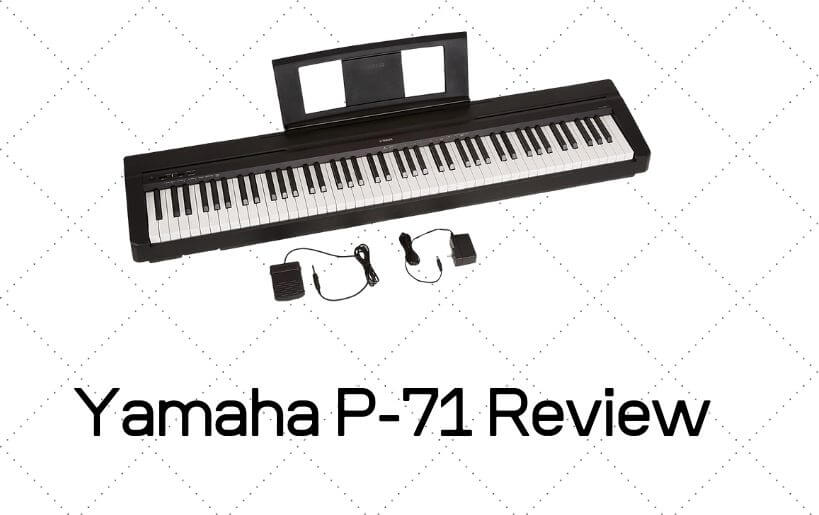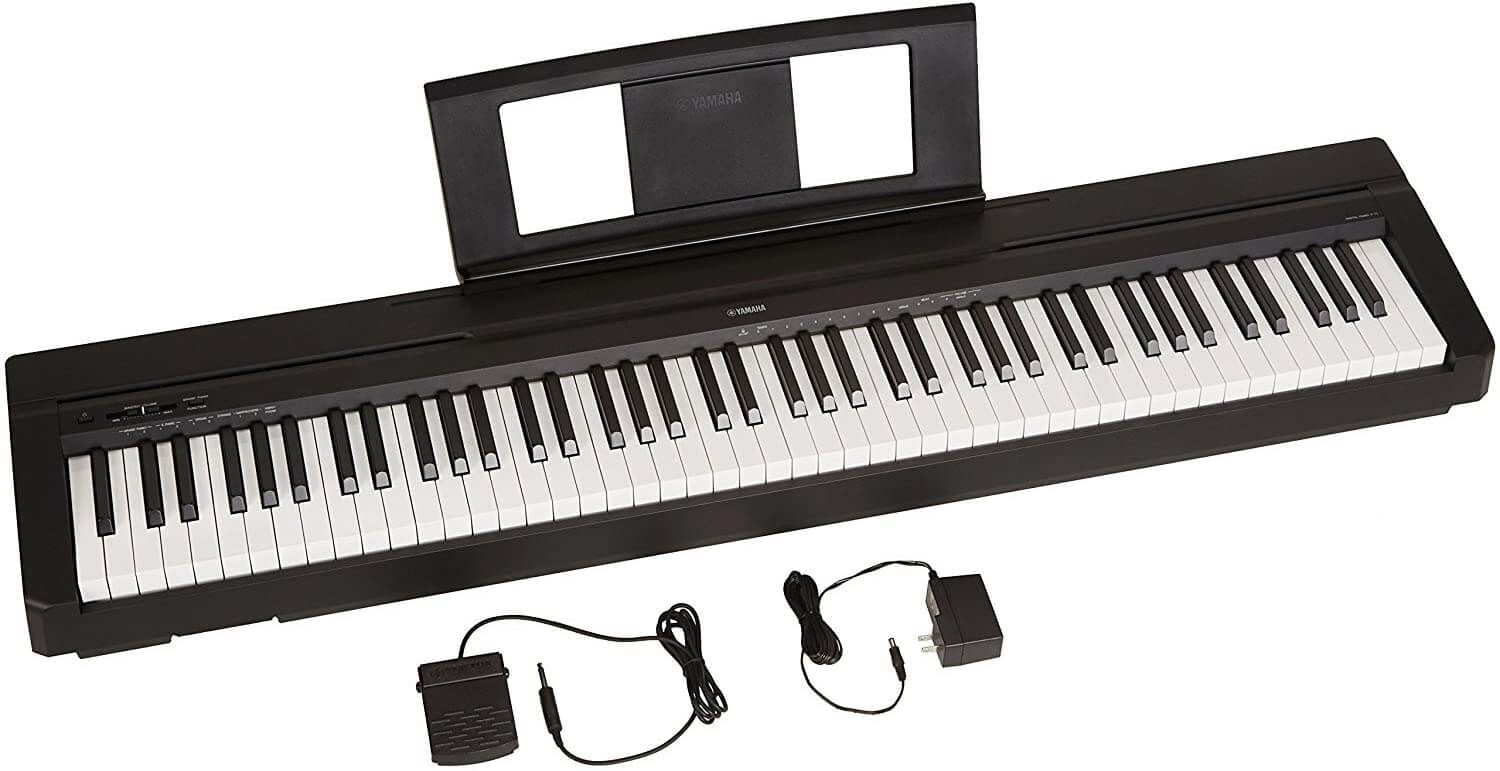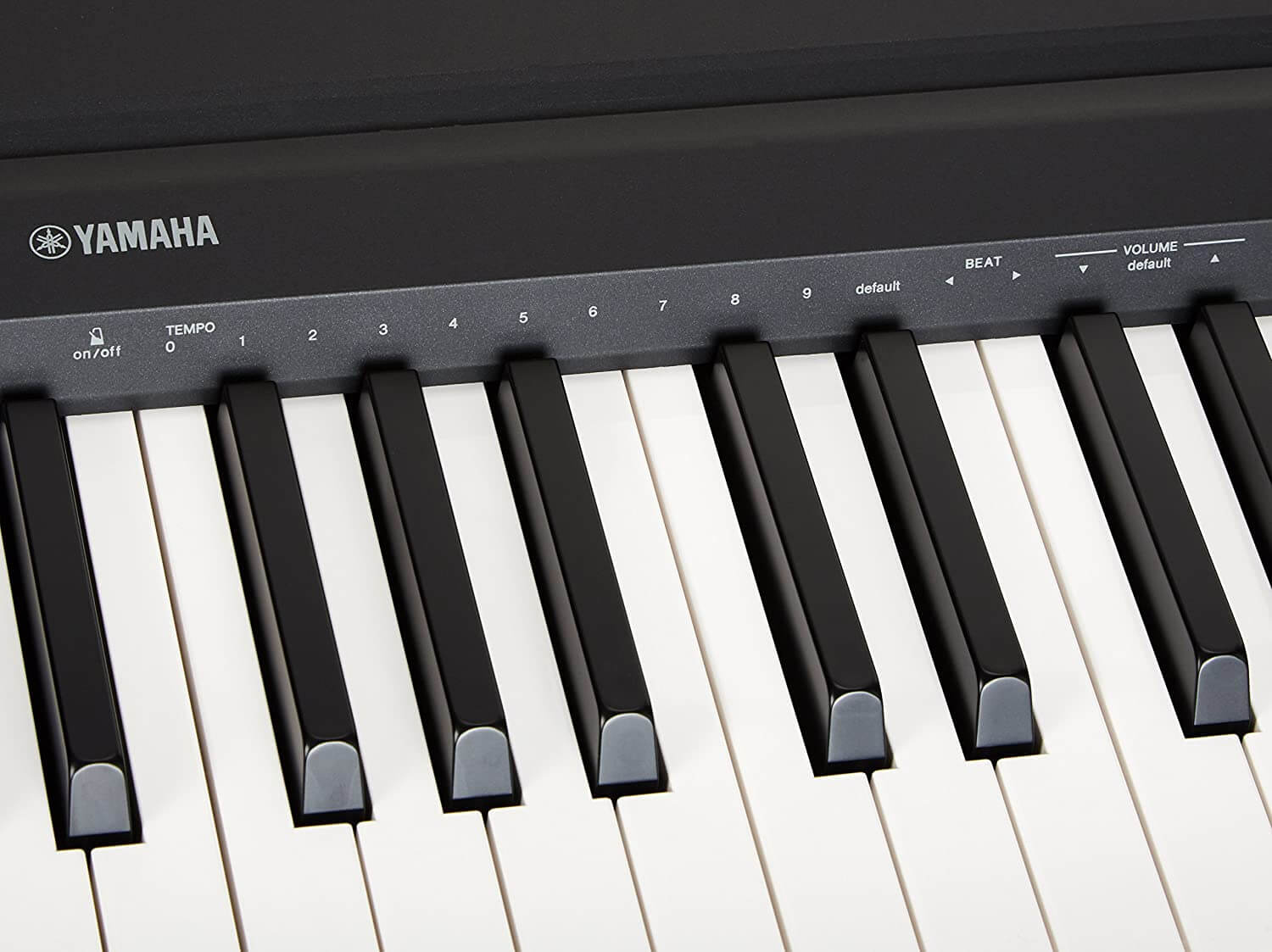If you’re just starting to learn piano and are looking forward to your first piano but do not want to settle for anything other than a Yamaha, then you’re like most of us. After all, we’ve been inspired by the legend keyboard players who used to play a Yamaha in their live and recorded performances.
Since you’re a beginner and you can’t afford to spend too much, you need to look for affordable pianos that can still do the job. One of such affordable yet highly featured digital piano is the Yamaha P-71.

Do you know about this piano? No? Don’t worry, we’ve decided to give you a full-on honest Yamaha P-71 review that will answer all your concerns.
Quick Navigation
Features Of Yamaha P-71:
Overall, the Yamaha P-71 is a good sounding digital piano with good enough touch sensitivity for a digital piano that costs less than $500. But it does not have the fancy features that others you’ll find among its contemporaries.
Professional players know that fancy features are nothing but a distraction. They can be detrimental for beginners who are just starting. Instrument makers add fancy features to their instruments to distract naïve buyers from the real deal.
The purpose of a keyboard or any musical instrument for that matter is to produce great quality sound and help its player learn and grow while doing so. While going through this Yamaha P-71 review, keep this in mind.
Aesthetics:

The “P” in P-71 stands for portable and therefore, this keyboard is designed to be portable. It weighs only 25lbs and its length is 52 inches while its depth is 11.5 inches. This makes up for quite a handy and compact piano that you can carry almost daily to your practices and place on any desk or table. Keep in mind that the P-71 is an 88-key piano, not a 61-key piano.
The P-71 comes in two colors; black and white. Both colors look elegant and simple on the Yamaha P-71. Unlike its contemporaries, the P-71 is not designed to stand out based on its aesthetic but rather sound quality and touch sensitivity. Therefore, you’ll find simplicity and minimalism in its design.
Sound quality
The Yamaha P-71 is equipped with Yamaha’s AWM sound engine, which is doing quite an impressive job of producing surreal sounds, crisp treble, and rich bass. The P-71 has 10 different piano voices built-in.
Although experts can feel the difference between the voices of this keyboard and that of a real acoustic piano. Still, for such an affordable piano the P-71 is doing a great job. A beginner can start, learn, and grow his skill quite seamlessly on this piano.
A drawback of the P-71 is that it only features a polyphony of 64 notes. The company might claim that P-71’s contemporaries are offering a 32-note polyphony. Although this might be true to some extent, we believe Yamaha could have done even better without affecting the price significantly. Instead of playing the blame game, we expect our favorites brands to do better.
Anyways, if you’re a beginner and you like the rest of the features in this piano, then you can work with this keyboard without this issue bothering you a lot.
Weighted Keys

If you ask a professional piano player about what feature mainly differentiates between an acoustic piano and a digital piano. They will quite unanimously say that it is the key’s sensitivity. Acoustic piano keys require pressure to be pressed whereas digital pianos had previously keys that required no pressure. Requiring no pressure made digital pianos look like toys and switching between these two instruments seemed quite a big shift.
However, with the improvement in technology, digital pianos were equipped with weighted keys. Well, not all. The expensive ones usually had this feature. As time went on, even the mid-range keyboards started featuring hammer action keys but who would have thought even a keyboard that costs less than $500 can have this feature.
The P-71 not only features graded hammer keys but unlike the cheap keyboard, this one delivers quality. So, if you progress in your keyboard playing skills you might find switching to an acoustic piano quite effortless. Moreover, the graded keys provide lower resistance on high notes and higher resistance on low notes, making it more like an acoustic piano.
However, there is one drawback in the P-71 when it comes to keys and that is the plasticky feeling that these keys exhibit. Although this is normal for a keyboard of this range, we still want you to know what you’re getting into.
More features

Usually, we talk about the control panel but the control panel of P-71 is so simple we would rather skip to other features such as connectivity, recorder, and the sustain pedal.
The bad news is the Yamaha P-71 does not feature a MIDI output, although it does feature USB connectivity. However, MIDI connectivity is very important for most users but if you’re new to playing piano you can do away with the USB port. Moreover, you can add external speakers, amplifiers, headphones, and DAWs on computers.
With the P-71 you can record the music you create. This is something very basic for most keyboards but some of the keyboards of the lower strata do not have this feature. Another worthy feature of the P-71 is the music rest provided in the package. You are also provided with the split and dual-mode features in this digital piano.
Lastly, the P-71 comes with a sustain pedal. Although not a high-quality sustain-pedal but the fact that its included in the package is still worth noticing. Beginners can do well with this sustain pedal and move on to a better one when they feel like.
Yamaha P-71 Overview:
Pros & Cons Of Yamaha P-71:
Although it’s pretty clear that the P-71 is quite a good deal considering the price, we would still break down the features into pros and cons to make the decision-making process much easier for you.
Pros:
- Affordable
- Compact and portable
- Simple and elegant
- A full 88-key piano
- Weighted keys
- Good sound and memory
- Good key sensitivity
- Music rest and sustain pedal included
- Dual and split feature
Cons:
- Sound quality not as good as found in expensive pianos
- No MIDI connection
- Plasticky keys
- Now quality sustain pedal
Conclusion
As you can see the Pros in this case far outweigh the cons and even these cons are not deal-breakers if you consider the price range. We still mentioned these cons because we want to leave you with an honest and comprehensive Yamaha P-71 review. Our goal is not to make the most sales but to guide our readers with the best advice available on the internet.